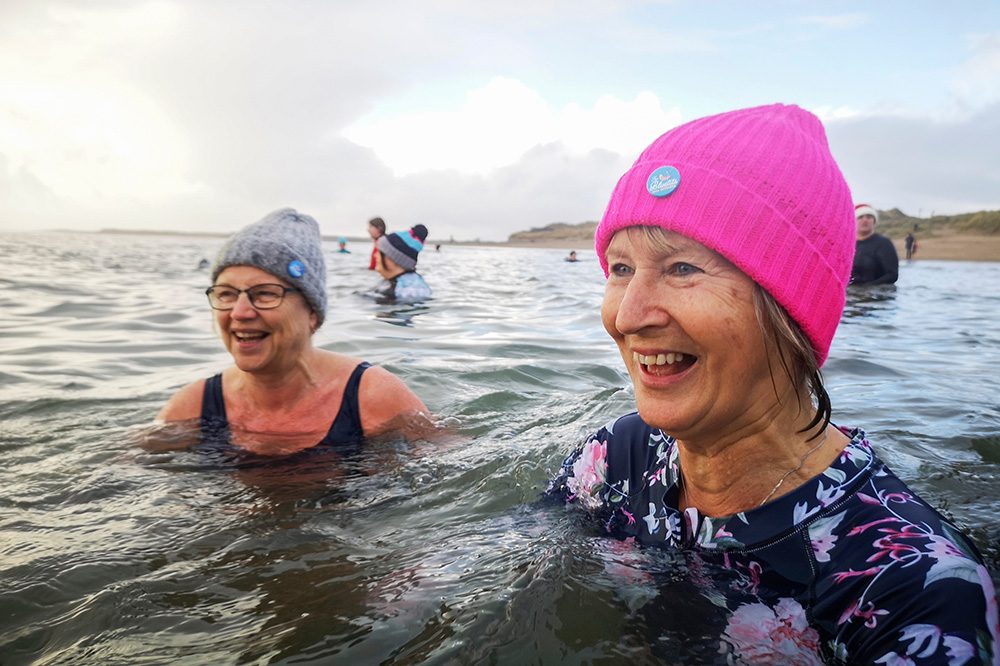
In the past few months, I’ve become very intrigued with cold therapy. After being an avid infrared sauna user for years, I thought I should dip my toes in cold water…literally! After hearing numerous benefits of cold exposure on stress, exercise recovery, heart rate variability, blood pressure, and glucose control (yes, I had to read it twice myself), I recently decided to try the Cryotherapy Chamber and Cold Plunging. As I did more research into cold exposure, I learnt that cold therapy goes all the way back to the time of Hippocrates. Hippocrates talks about cold water helping with the depletion of energy. Ancient Greeks used cold baths as a form of socialization, recovery, and rejuvenation. I’ve sort of resorted to the idea that if the Romans and Greeks did it, we should be doing it as well as they knew best. The application in which cold therapy is used remains the same, with it being mostly ice, cold air, and cold-water immersion. These practices have now evolved by changing temperatures, and the duration involved. Cryotherapy chambers, because of their convenience have the capacity to get as low as -200 F but have limitations on time, being no more than 3 minutes. Cold Plunges will get down to 34-59 F and the limitations would be decided by the individual body. This will be different for individuals living in colder countries as are better cold adapted.
Fueling this fire came a recommendation about a book on a podcast by author Suzanna Solberg called “Winter Swimming”. She talks about cold exposure elevating adrenalin, noradrenalin, dopamine, and Oxytocin. That was reason enough for me to go ahead with this. I mean, who doesn’t want more of the good stuff? Neuroscientists have been working on ways to increase these neurotransmitters for years and if we can use one more tool in our arsenal, then we should take advantage of it. I’m particularly interested in oxytocin as it is one of the hormones released by women as part of the flight or fight system, encouraging socialization and bonding. Oxytocin, our love hormone can help relieve stress! Yes, similarly a hug can do just that.
I decided that I would try the Cryotherapy chamber first and then the cold plunge to be able to discuss and feel the difference. Most cryotherapy chambers use liquid Nitrogen which then converts it to a fog-like environment inside the chamber. The temperature was set to-170F. I had to wear mandatory socks, slippers, a bathrobe, and an optional hat. The chamber opened and I stepped in. The best way I can explain this is like stepping into a freezer, however the cold from the cryotherapy chamber isn’t painfully uncomfortable and is easier to tolerate. The three minutes went by fast, mainly because you are allowed to listen to music. One of the things that I really enjoyed about the Cryotherapy chamber is that it’s quick and fast and you don’t have to spend time prepping for the plunge. I implemented some calm breathing techniques as you would do while meditating. The whole idea of this attempt is to learn how to breathe under pressure, or in this scenario, an uncomfortable environment. If you can learn how to control your breathing in extremely cold conditions, you might be able to learn how to control your breathing under other difficult life situations. Think stress, think breathing!
My experience with the cold plunge wasn’t as clean and enjoyable. The temperature of the cold plunge was 34 Fahrenheit and even though I had prepped by doing a few cold showers beforehand, nothing can really prep you for icy cold water. I was in my bathing suit, and it took me a while before I was able to get into the plunge. I used the same meditation breathing techniques as with the Cyro chamber only this time I felt like I was hyperventilating. It took me a minute or two to calm myself down but the shock effect with water is a lot more uncomfortable. I was desperately uncomfortable and wanted to get out within the first minute. I did however end up staying in the water for a good 5 minutes before I got out and toweled myself dry. I did submerge my head into the cold water for a couple of seconds as that initiates the parasympathetic nervous system, which is great for calming our brain.
The effects of the Cryotherapy came mainly with reduced muscle soreness and improved sleep. Apart from those two, I didn’t see much of an effect with the Cryo Chamber. The effects of the Cold Plunge were more intricate and subtle. Apart from my body trying to heat itself up with shivering for a good 20-25 minutes, I felt a symphony of calm in my head, almost like I had done a yoga class with a great meditation ending. It was a feeling that I had not experienced in years. I felt mental clarity, calmness, and energy in my body all at the same time. It was almost like I had a cup of coffee but with magical powers. One of the most surprising benefits of cold-water exposure has been on my heart rate. Each time I did a cold plunge, my heart rate would drop down from the 60s to the 40s and my blood glucose would be considerably lower that day. This is all documented in the research and cold-water exposure has a multitude of benefits for the body.
I do appreciate that it takes a certain lifestyle to incorporate Cryotherapy into your lifestyle and not everyone can afford it. Each session in a cryotherapy chamber, if one is available in your neighborhood will set you back $35 dollars. In my opinion, experience with cold-water exposure doesn’t have to be expensive and should not be. Something as wonderful as icy water submersions should be free and everywhere. Nature has provided pools, springs, and open water seas everywhere and you should take advantage of this. My advice is: always take a buddy with you. If you have an accountability partner, things get easier, and you will feel safe. If nothing works, fill your bathtub with cold water and add a gallon or two of ice cubes. It will feel uncomfortable the first few times, but with each exposure, it gets easier. There are very few things in life which elevate dopamine, epinephrine, nor-epinephrine, oxytocin and that stimulate the rest and digest part of your autonomic nervous system and cold seems to have covered them all.
